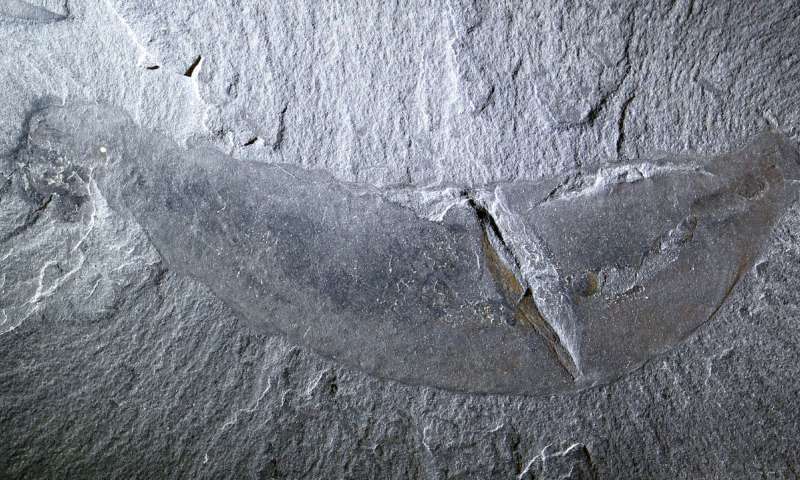This story is at https://phys.org/print437926257.html … firstly, these kind of fossil are few and far between. The fossil record is mostly about the preservation of hard sections of the body – shells, bones, teeth etc. I was looking at some fossils of marine Pleisosaurs the other day and all that was dug out of the rock was the vertebrae and joint bones (although some smaller bones can be found). This is what we mostly know about dinosaurs – the skeletons. That is, until recently, when some of the soft parts have turned up. What this study seeks to show is that soft part fossils are preserved for a reason – and can be targeted in future excavations by palaeontologists. Internal organs, eyes, feathers, colour etc are rarely preserved – and the same goes for animals that are completely composed of soft material, such as worms. They tend to die and decompose prior to fossilisation. For obvious reason we know what a lot of soft part tissue actually looked like as in some cases it has been preserved by fossilisation – but why only some fossils? What environmental conditions are required for this to happen? Oxford University researchers, and others, say that mineralogy is the key (the soils or sediments in which they were buried). One exceptional fossil deposit is the Burgess Shale in Canada. Similar deposits have now been found in various other parts of the world and without them, roughly 80 per cent of Cambrian organisms would remain completely unknown – as they have no hard skeleton or shell. Naturally, that would completely distort our view of evolution. In addition, it is a fact that tends to suggest the fossil records is slewed in one direction – the survival of bony animals in sediments rather than soft tissue animals. Having said that, the fact the Burgess Shale has been so productive, allowing scientists a window view of life in the Cambrian, leaves one wondering what life may have been like in the Pre-Cambrian period. Was it really a cupboard without much organisms – or has the life forms at that time failed to be preserved – an accident of fossilisation.
 … Certain clay minerals, it is claimed, appear to be toxic to the bacteria that decay marine animals (in particular). The researchers use this fact to prove that rocks composed of such clays, or containing a significant amount of such clay, are more likely to preserve soft tissue – with the accent on Burgess Shale like deposits. The findings of the research is that soft tissue fossils are, in general, but not always, found in rocks rich in the mineral, enthierine (one of the clay minerals identified prior to the research). It forms when sediment contain high concentrations of iron – and therefore mostly in the tropics. What is more important – the iron or the clay mineral? Where does the excess iron originate?
… Certain clay minerals, it is claimed, appear to be toxic to the bacteria that decay marine animals (in particular). The researchers use this fact to prove that rocks composed of such clays, or containing a significant amount of such clay, are more likely to preserve soft tissue – with the accent on Burgess Shale like deposits. The findings of the research is that soft tissue fossils are, in general, but not always, found in rocks rich in the mineral, enthierine (one of the clay minerals identified prior to the research). It forms when sediment contain high concentrations of iron – and therefore mostly in the tropics. What is more important – the iron or the clay mineral? Where does the excess iron originate?
Referring back to another post last week, gaps in the fossil record. Apparently these are quite common – long periods in which no fossils were laid down. This is even a feature of the relatively well know Cretaceous – which contains at least two fairly lengthy periods of time in which no fossils were laid down. This fact is supportive of the idea the fossil record actually relies on catastrophic events in order to produce fossils and preserve the evolutionary record. It is therefore indicative that a lot of evolution took place in the periods where there is an absence of fossils – or in the immediate aftermath of catastrophic events (new animals filling niches in nature).
